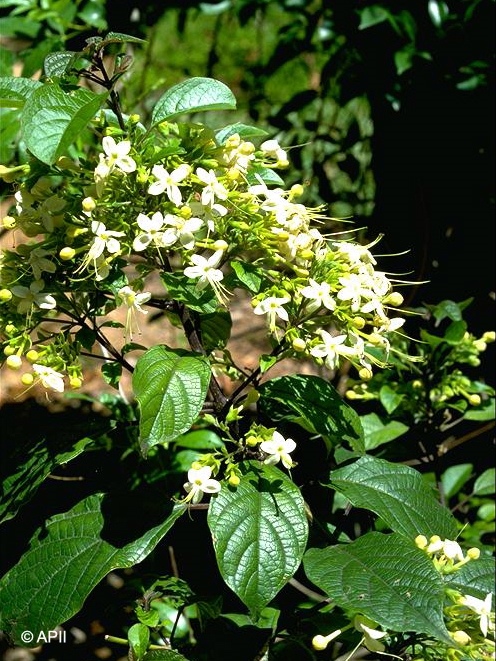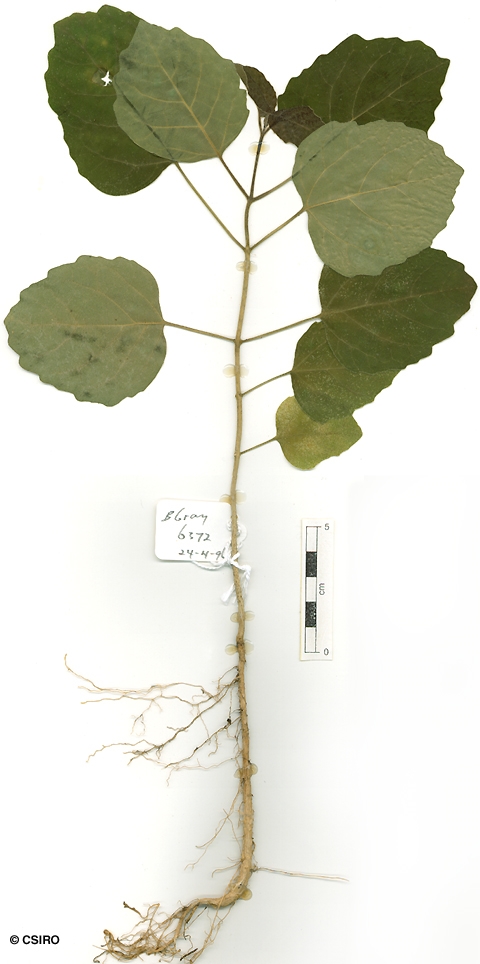Australian Tropical Rainforest Plants - Online edition
Clerodendrum tomentosum (Vent.) R.Br.




Brown, R. (1810) Prodromus Florae Novae Hollandiae : 510.
Hairy Clerodendrum; Lolly Bush; Hairy Clerodendron; Flowers of Magic; Downy Chance Tree; Witches Tongues
Bark coarsely tessellated and dead bark layered. Outer and inner blaze almost white.
Leaf blades about 6-13 x 2.5-6 cm. Lateral veins curved throughout their length and leaf blade is densely clothed in white erect hairs on both the upper and lower surfaces. Stipules absent but twigs marked by scars which closely resemble stipular scars. Leaf bearing twigs densely clothed in pale erect hairs. Petioles hairy and shallowly channelled on the upper surface.
Calyx about 6-9 mm long, lobes about 3-4 mm long, softly pubescent on the outer surface but glandular and puberulous inside. Corolla tube long and slender, about 18-25 mm long, pubescent on the outer surface, lobes about 6-8 mm long. Anthers dark brown immediately after shedding pollen.
Occurs in WA, NT, CYP, NEQ, CEQ and southwards as far as south-eastern New South Wales. Altitudinal range from near sea level to 400 m. Grows in monsoon forest, drier, more seasonal rain forest and gallery forest. Also occurs in New Guinea.
Three subspecies are recorded.
1. Clerodendrum tomentosum (Vent.) R.Br. var. tomentosum occurs in WA, NT, QLD and NSW usually in deciduous vine forest, coastal vegetation and river banks. It is distinguished in part by the leaf blades which can be elliptic, elliptic-oblong or broadly lanceolate with attenuate base.
2. Clerodendrum tomentosum var. mollissima Benth. occurs in deciduous vine thickets and coastal vegetation in WA, and rarely in NT. It is distinguished by the leaf blades which are very broadly ovate with an almost rounded leaf base.
3. Clerodendrum tomentosum var. lanceolatum (F.Muell.) Munir occurs in WA and in Qld near Chillagoe and inland areas south towards Rockhampton. It is distinguished in part by the leaf blades which are narrow-lanceolate and attenuate at both ends.





